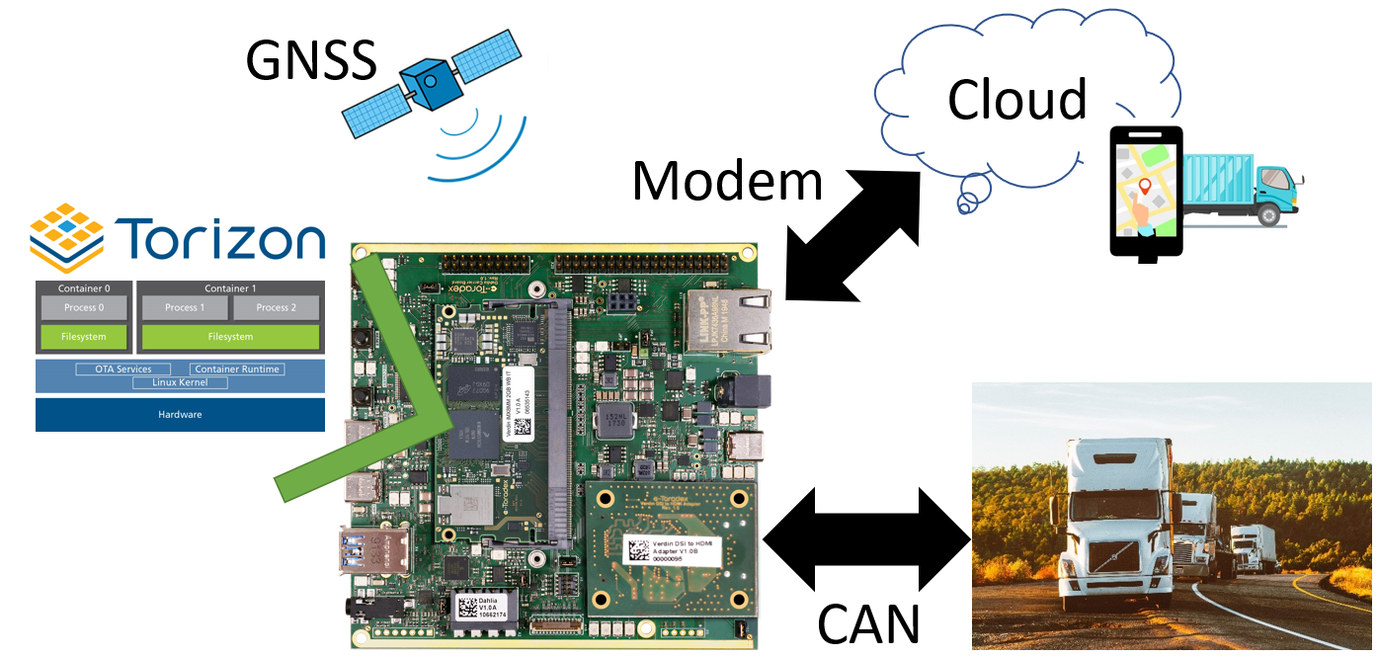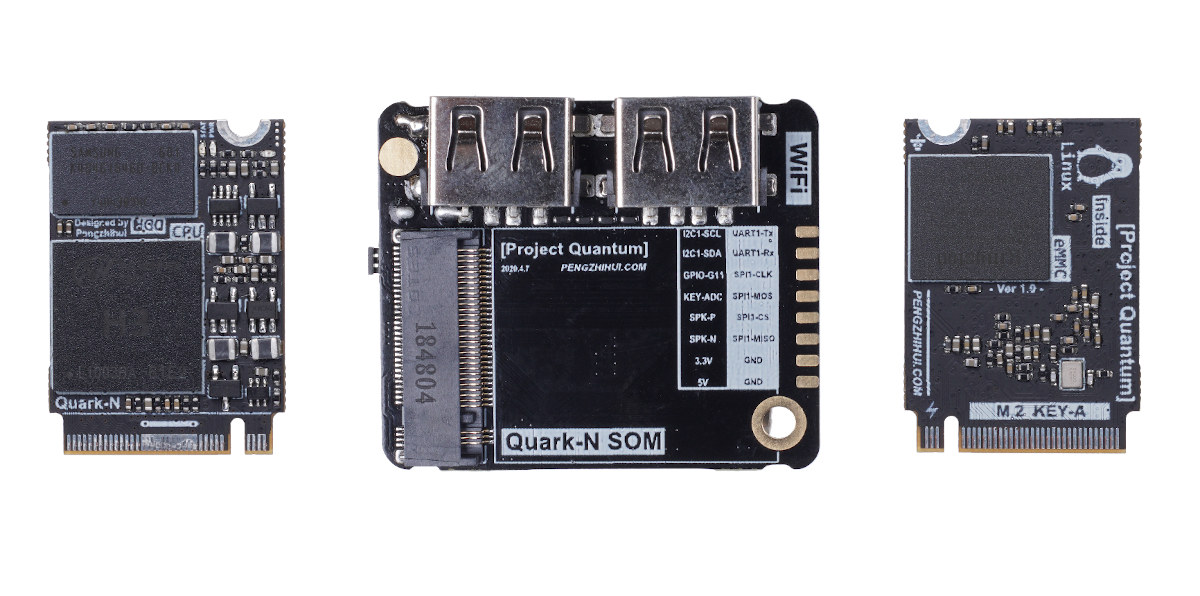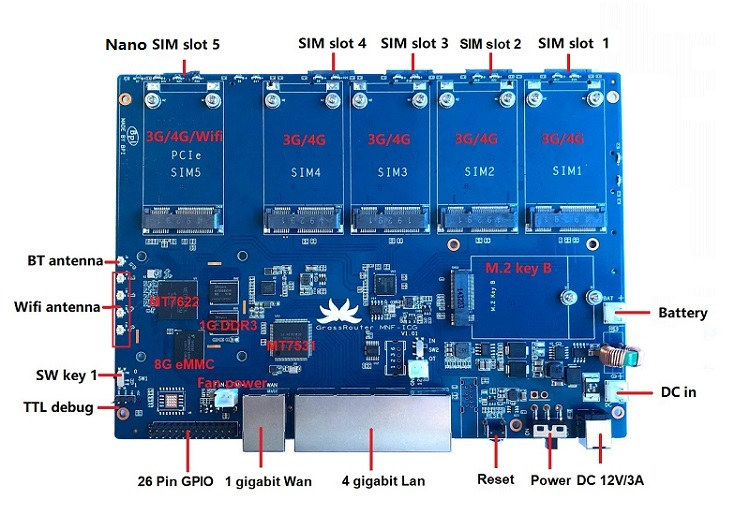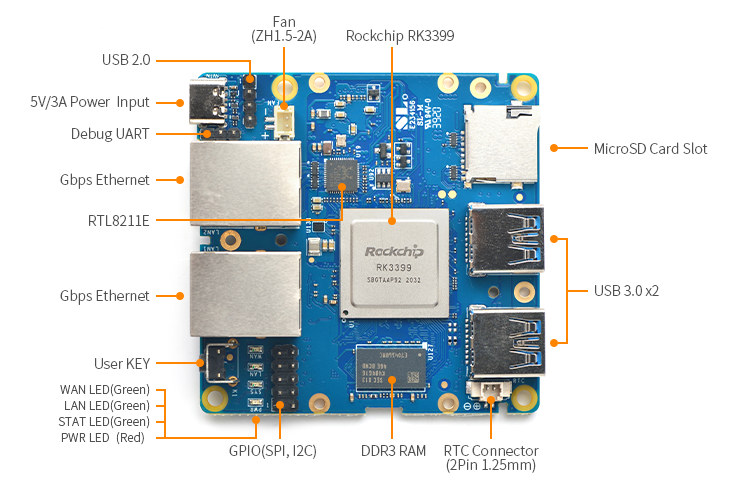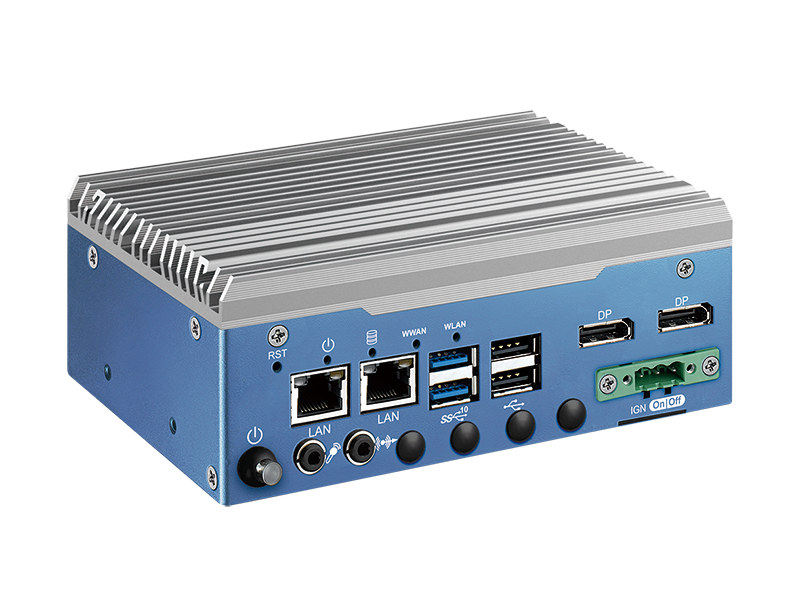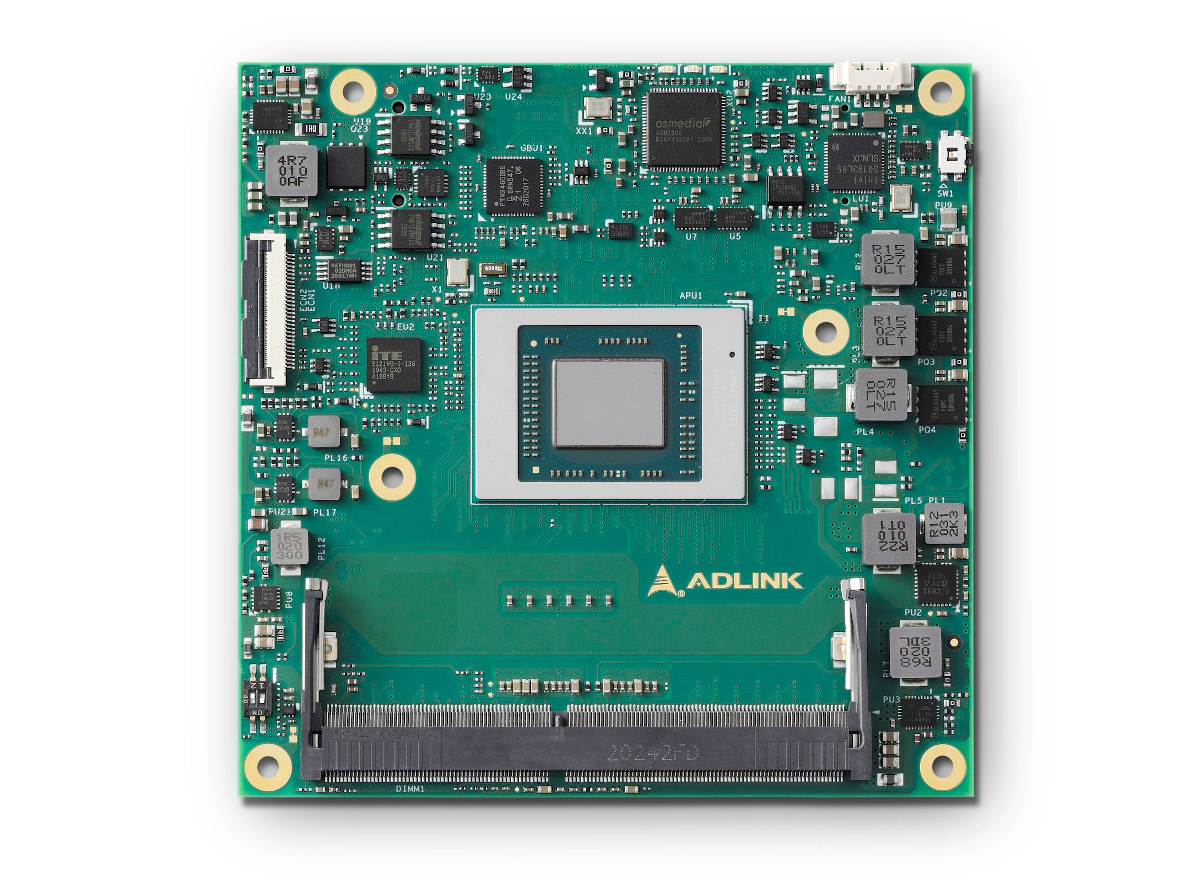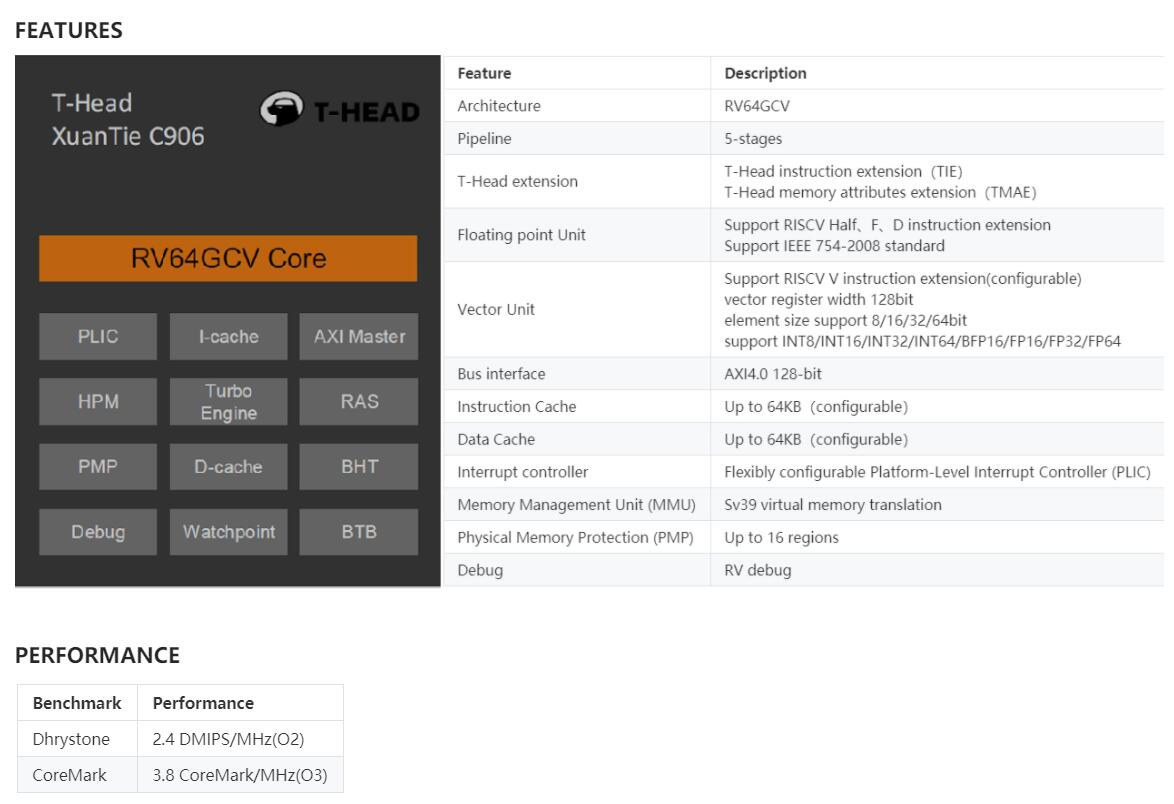CNXSoft: This is a guest about OBD-II and CAN support in embedded Linux by Andre Márcio de Lima Curvello, Sr. FAE and Technical Evangelist, Toradex A connected world makes it possible to track your online orders being shipped to your home through your smartphone in real-time, and getting information about your vehicle such as tire pressure, outside temperature, and even details like if a lamp is broken – has begun to be possible via smartphones in modern vehicle models. But behind the magic of knowing where the truck carrying your package is at all times and other details of the vehicle, there is a very complex world made of embedded devices ‘talking’ to each other so the information makes its way from the device to you. In this article, you will learn how to create an application to communicate with a vehicle through CAN via the OBD-II standard. We use […]
Quantum Mini devkit combines Allwinner H3 M.2 SoM with baseboard
Quantum Mini may be yet another Allwinner H3 Arm Linux development board, but what makes it special is the company used the standard M.2 Key-A 22mm form factor to create Quark-N Allwinner H3 system-on-module with storage and memory. The kit is completed by Atom-N baseboard that takes the M.2 module and offers two USB 2.0 ports, one USB Type-C port, as well as 2.4 GHz WiFi 4 and Bluetooth 4.0 connectivity, and a MicroSD port for additional storage. Quantum Mini development kit specifications: Quark-N SoM SoC – Allwinner H3 quad-core Cortex-A7 @ 1GHz with Mali-400MP2 GPU System Memory – 512MB LPDDR3 Storage – 16GB eMMC flash Interfaces exposed via M.2 connector – Ethernet, SPI, I2C, UART, GPIO, MIC, LINEOUT Dimensions – 31 x 22mm (6-layer PCB) Temperature Range – 0-80°C Atom-N baseboard M.2 socket for Quark-N system-on-module Storage – MicroSD card slot Display – TFT display Connectivity – 2.4 GHz […]
LibIIO – Library for interfacing Linux industrial I/O devices
For more than 6 years, the LibIIO library has existed to ease the development of software interfacing Linux Industrial I/O (IIO) devices. It is part of the Linux Kernel and a subsystem that provides support for devices like analog to digital or digital to analog converters (ADCs, DACs). This subsystem includes ADCs, accelerometers, pressure sensors, color, light and proximity sensors, temperature sensors, RF transceivers, and many more. You can use LibIIO natively on an embedded Linux target. It is cross-platform, supporting Linux, Windows, and Mac OS. Analog Devices Inc. was the main company behind LibIIO development, which is currently an active open-source library, which many people have contributed to. What does LibIIO do? LibIIO will identify the channels that belong to each device. It will assign specific attributes, one for the channels and one for the devices. Then, it will also create a context that is a place where all […]
Cellular gateway board takes up to five 4G mini PCIe cards, one 5G M.2 module, seven SIM cards
One Banana Pi customer asked them to customize Banana Pi BPI-R64 Linux router board based on MediaTek MT7622 WiFi processor as part of their “BPI 4.0 server” OEM/ODM customization service. Specifically, they were asked to design a cellular gateway board with the same five Gigabit Ethernet ports as on the original board, but adding five mini PCIe sockets and SIM card slots for 3G/4G cards, and one M.2 socket plus two SIM cards for a 5G module. Here’s the result! Banana Pi “GrassRouter” cellular gateway board specifications: SoC – MediaTek MT7622E dual-core ARM Cortex-A53 processor @ 1.35GHz System Memory – 1 or 2GB RAM Storage – 8GB eMMC flash, MicroSD card slot Connectivity Cellular 1x 5G via M.2 Key-B module (USB 3.0 or PCIe bus), 2x SIM card slots. Up to 5x 3G/4G LTE via mPCIe expansion socket, 5x SIM card slots Ethernet – 5x Gigabit Ethernet ports (4x LAN […]
NanoPi R4S headless RK3399 SBC features up to 4GB RAM, dual Gigabit Ethernet, USB 3.0 ports
We’ve seen several tiny ultra-cheap boards for headless applications over the last few years with products Orange Pi Zero Plus or NanoPi R2S which are usually based on 32-bit Cortex-A7 or low power 64-bit Cortex-A53 processors, coupled with up to 512MB to 2GB, and may have some limitations when it comes to Gigabit Ethernet and USB 3.0 speeds. If you’d like something similar but more powerful, FriendlyELEC is working on NanoPi R4S headless SBC powered by a Rockchip RK3399 hexa-core Cortex-A72/A53 processor with up to 4GB RAM, dual Gigabit Ethernet, and two USB 3.0 ports. NanoPi R4S preliminary specifications: SoC – Rockchip RK3399 hexa-core processor with dual-Core Cortex-A72 up to 2.0GHz, quad-core Cortex-A53 up to 1.5GHz, Mali-T864 GPU with OpenGL ES1.1/2.0/3.0/3.1, OpenCL, DX11, and AFBC support, 4K VP9 and 4K 10-bit H265/H264 60fps video decoder System Memory – 1GB DDR3 or 4GB LPDDR4 Storage – MicroSD card slot Networking – […]
Fanless Tiger Lake UP3 embedded box PC targets industrial IoT, robotics & automation
Last month Vecow introduced SPC-6000 fanless embedded PC powered by an Atom x6425RE Elkhart Lake processor, and considering Tiger Lake UP3 embedded processors were announced at about the same time as Atom x6000E-series family, it should come as no surprise that the Taiwanese company has introduced a more powerful Tiger Lake UP3 model. Vecow SPC-7000/7100 Tiger Lake UP3 embedded box PC is equipped with a choice of Core i3 to i7 processors with 12W to 28W TDP with support for Iris Xe graphics, 2.5GbE, TSN networking that makes it suitable for factory automation, robotics, cellular V2X, smart retail, and any AIoT/Industry 4.0 applications. Vecow SPC-7000/7100 specifications: SoC – Intel Core i7/i5/i3 quad-core Tiger Lake UP3 processor with Intel UHD graphics or Intel Xe Graphics; 12W to 28W configurable TDP System memory – Up to 32GB via 1x DDR4 3200MHz SO-DIMM socket Storage – 1x M.2 Key B 2260 Socket, 1x […]
AMD Ryzen Embedded V2000 8-core Computer-on-Module supports up to 64GB RAM
AMD Ryzen Embedded V2000 processors with up to eight Zen2 cores and faster Radeon graphics have been officially announced, and one of the first hardware platforms to take advantage of the new processor is ADLINK cExpress-AR COM Express Type 6 Compact computer-on-module suitable for demanding graphics-based applications such as medical ultrasound, image processing, 4K high-speed video encoding and streaming for broadcasting, embedded gaming, and infotainment. ADLINK cExpress-AR specifications: SoC AMD Ryzen Embedded V2516 hexa-core/12-thread processor @ 2.1 GHz / 3.95 GHz (Turbo) with 3MB L2 cache L2, 6 CUs Radeon RX Vega 6 GPU @ 1.5 GHz; TDP: 10-25 W AMD Ryzen Embedded V2546 hexa-core/12-thread processor @ 3.0 GHz / 3.95 GHz (turbo) with 3 MB L2 cache, 6 CUs Radeon RX Vega 6 GPU @ 1.5 GHz; TDP: 35-54 W AMD Ryzen Embedded V2718 octa-core/16-thread processor @ 1.7 GHz / 4.15 GHz (Turbo) with 4MB cache, 7CUs Radeon RX […]
XuanTie C906 based Allwinner RISC-V processor to power $12+ Linux SBC’s
Alibaba unveiled Xuantie-910 RISC-V core (aka XT910) in 2019 for powerful SoC with up to 16 cores, but an update in 2020 revealed the company planned to have a complete RISC-V core family for a wide range of application from low-power microcontrollers to server SoCs. At the time, I just assumed the company planned to keep their cores to themselves, but time proved me wrong as T-Head, the Alibaba subsidiary in charge of developing RISC-V cores, started to cooperate with Allwinner to develop open-source processors, which should lead to low-cost Linux capable RISC-V SBC very soon according to a tweet from Sipeed. Good News: We get first chip which based on XuanTie C906 (RV64GCV), it have abundant interface (HDMI/RGB/DVP/MIPI/GMAC/…), and will be able to run Debian system.Last and most important, the basic dev board price is start at 12.5$ (1% of HiFive Unleashed)。 pic.twitter.com/EJbXTJ5eMb — Sipeed (@SipeedIO) November 6, 2020 […]


